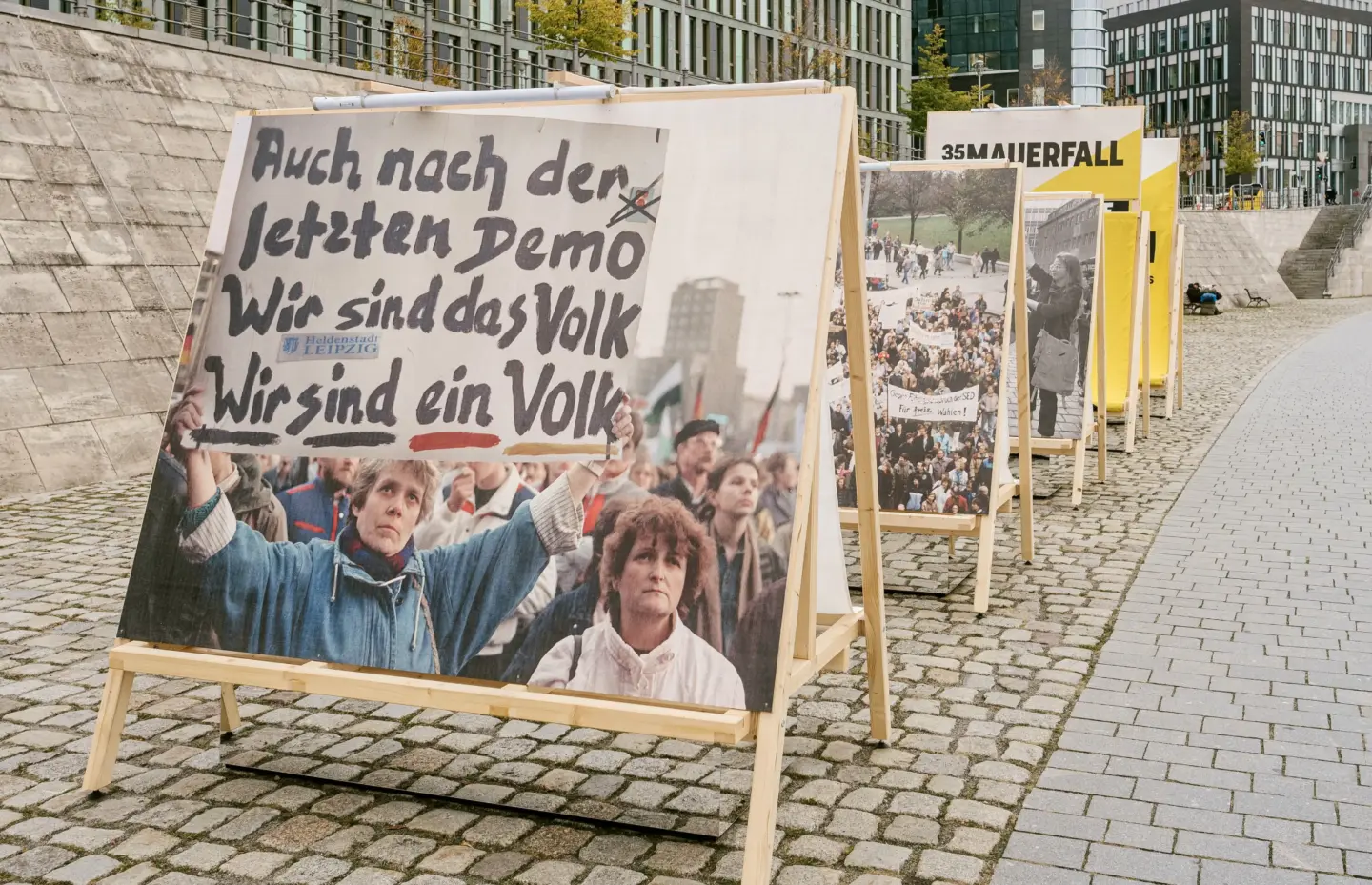The demands made by protesters during the Peaceful Revolution will be showcased in a special exhibition created in cooperation with numerous experts from memorial sites, foundations and academia. At seven ‘stations’ along the path of the former Berlin Wall, this exhibition will spotlight the path to freedom. Who were the key actors in the Peaceful Revolution? What role did the democracy movements in Eastern Europe play in the protests in the GDR? What was the significance of flight and emigration? How did the protests emerge and what public forums were available to citizens of a country with no freedom of the press? How did events on 9 November 1989 play out and how did German unification actually come about?

Visitors will be invited to engage with explanatory texts, eyewitness stories and moving photos that allow them to deepen their knowledge about historical events and share this knowledge with others.
These are the seven topics that are presented:
Opposition & Protest
Location of the exhibition on the historical background to the Peaceful Revolution
Demonstrations & Participation
Location of the exhibition on the historical background to the Peaceful Revolution
Democracy & Unification
Location of the exhibition on the historical background to the Peaceful Revolution
Fall of the Wall
Location of the exhibition on the historical background to the Peaceful Revolution
Revolutions in Easteurope
Location of the exhibition on the historical background to the Peaceful Revolution
Flight & Emigration
Location of the exhibition on the historical background to the Peaceful Revolution
Media & Public Sphere
Location of the exhibition on the historical background to the Peaceful Revolution
On 7 November 2024, an exhibition called “China isn’t far! 35th anniversary of the fall of the Berlin Wall – 35th anniversary of Tian’anmen” will open in front of the Abgeordnetenhaus. Created by the Axel Springer Freedom Foundation, it examines the violent suppression of the student protest movement for democracy on 4 June 1989 in Beijing. It also looks at the reactions of civil rights activists in the GDR to that event and sends a message of solidarity to the contemporary democracy movement in China. In addition, on November 9, 18 dissidents who are fighting for freedom and democracy in their authoritarian-ruled home countries – from Hong Kong, Iran, and Belarus to Venezuela – will be portrayed along the route of the open-air installation. For all of them, the fall of the Berlin Wall and the Peaceful Revolution are sources of strength and hope. The 18 portraits of current nonviolent resistance against oppression were created in cooperation between Kulturprojekte and the Axel Springer Freedom Foundation.
You can find more information on dissidents and activists worldwide in the article “Freedom struggles worldwide”.

© CATHERINE HENRIETTE/AFP
Social Media







